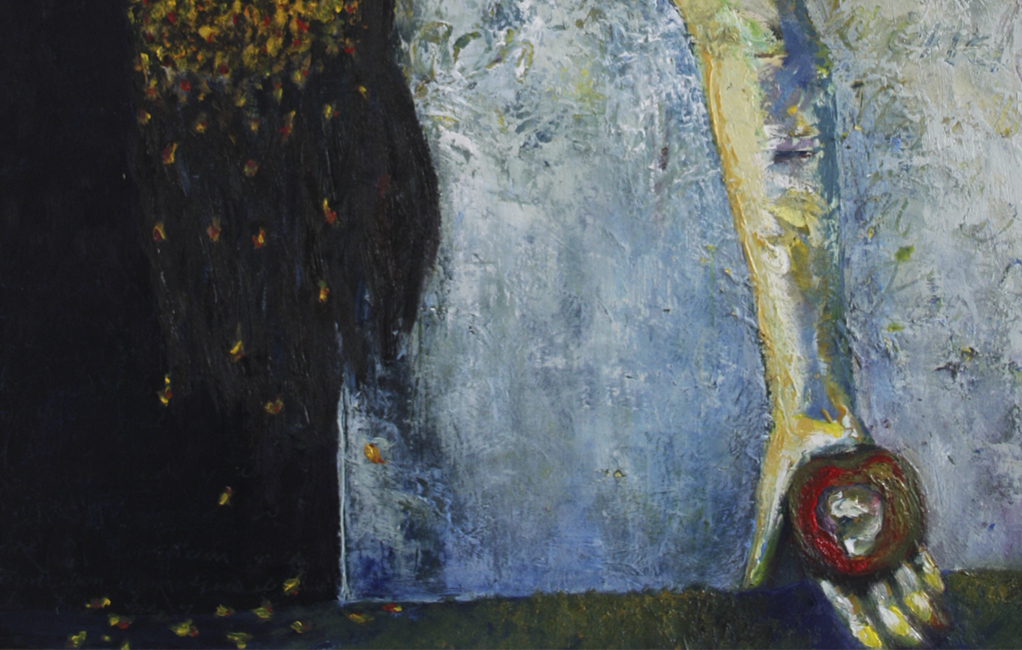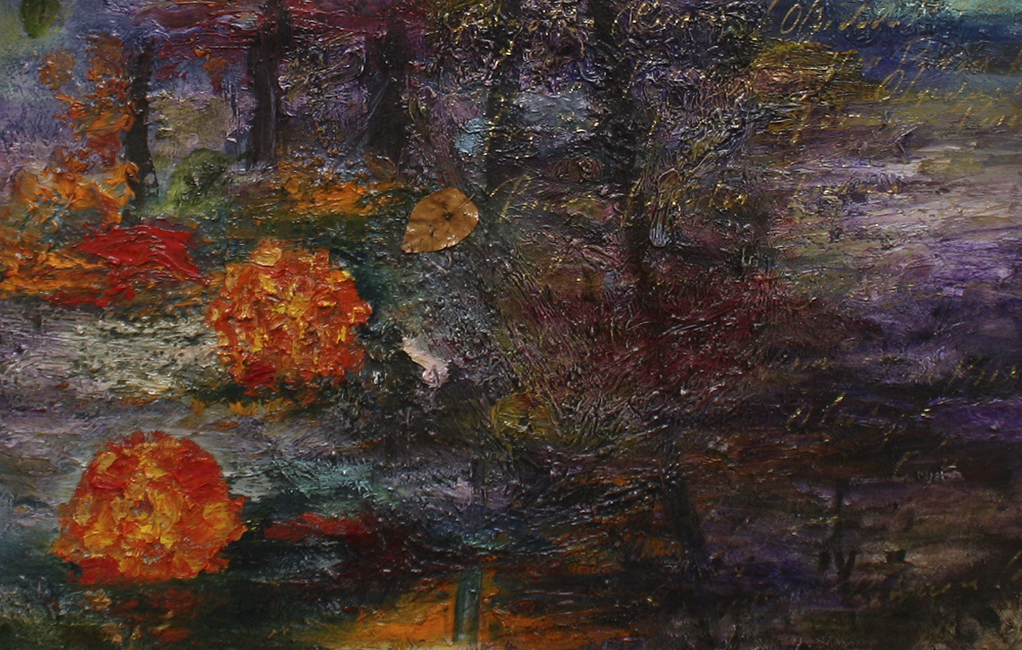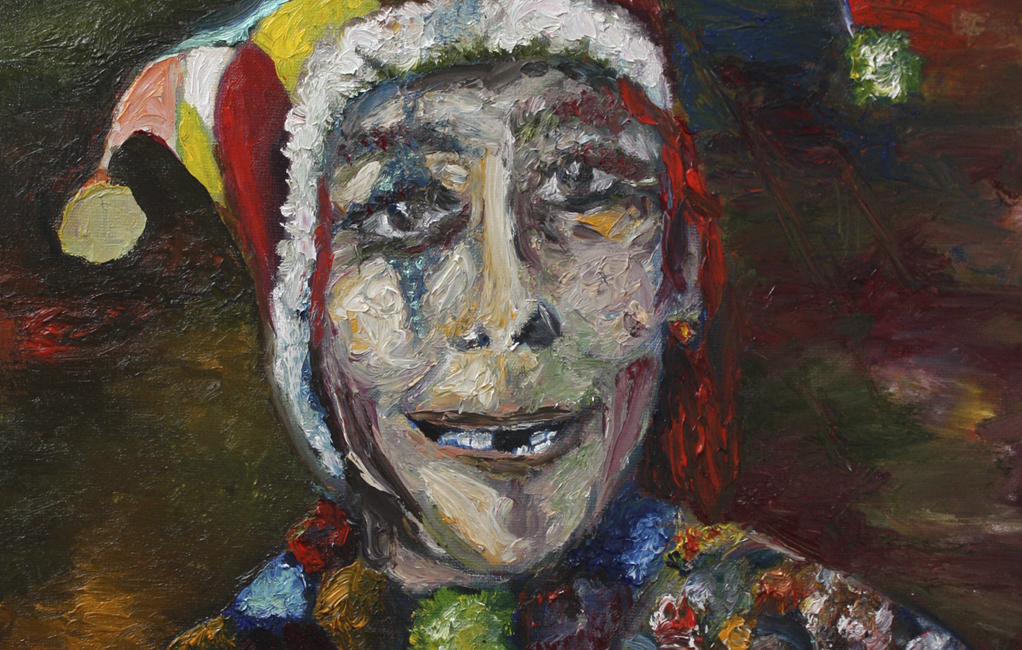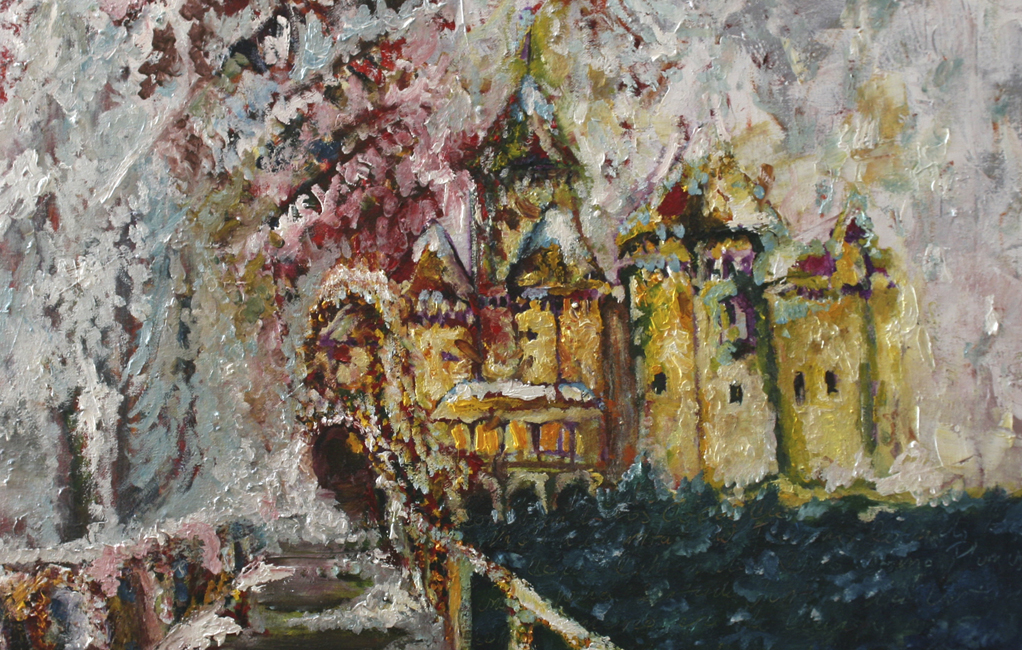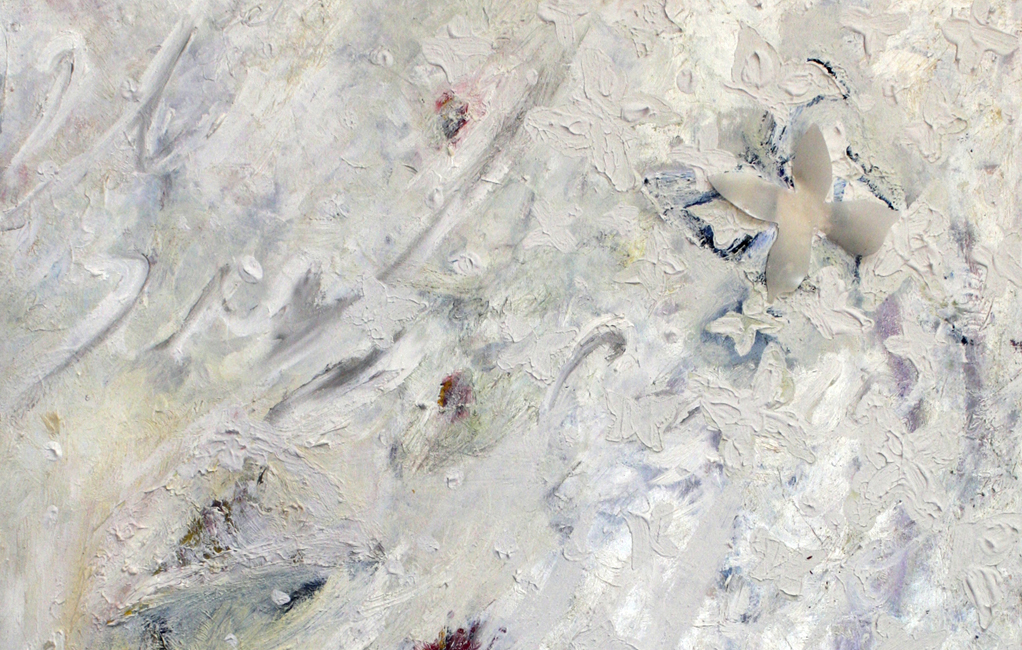{ The legacy of the fairy tales }

This project sponsored by the Consulate of Colombia, and El Servei of Blibliotecas de Catalunya, has toured 21 cities between Spain and the Netherlands.
We recommend viewing the paintings and information in a computer.

Catalog of works
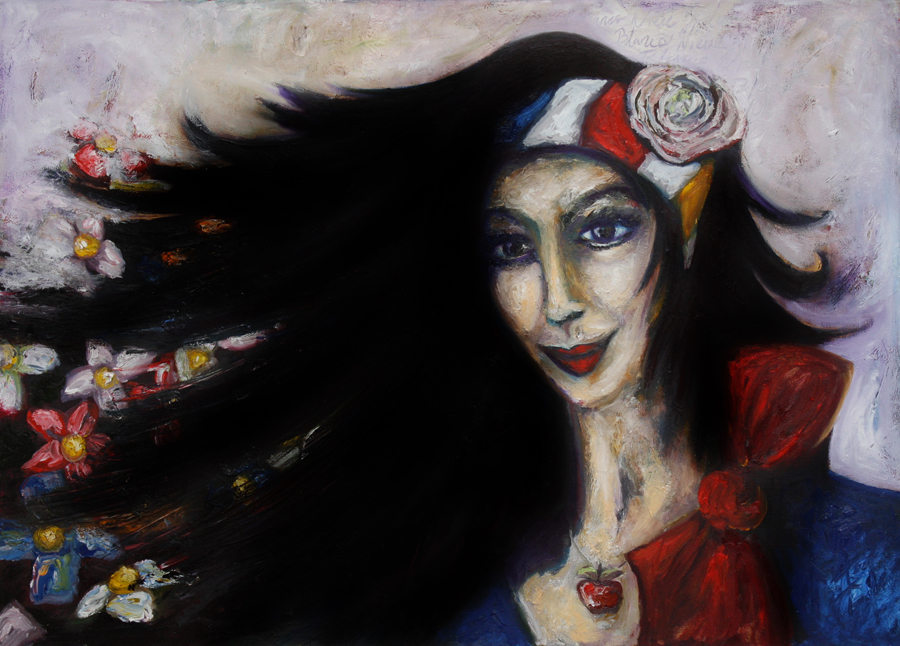

Snow White
Snow White. (B.Grimm 1812).
The artist shows us a portrait ofSnow White based on the elements of the ritual since these elements are what give the character her true characteristics: the red, the Black and the white. Through this portrait the artist shows the journey and condenses the plot that unfolds throughtout the story in one final image.
The red blood that defines her is present on her lips present, a source of desire for many. They are reinforced by the apple, which throughout the story, is regarded as a fruit of seduction.
The black covers about half of the portrait and is composed of the different shades of color that seem impenetrable but at the same time show a positive outlet through them (the flowers).
The white snow is expressed in the face. It is through this element that everything is created. It not only refers to a tone but also a state of time that will be changing until the spring when our heroine finally achieves her happy ending.

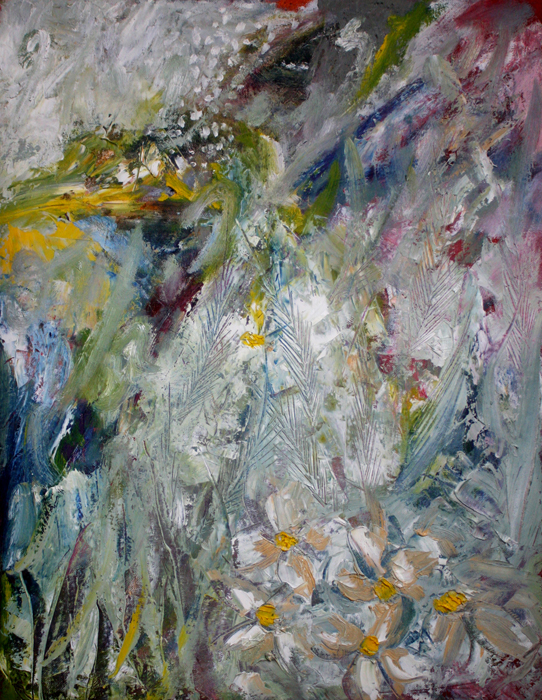

Forest
Hansel and Gretel (B. Grimm, 1812).
The painting’s title makes reference to the forest where the children got caught , that forest in the literature and in the context of stories indicates an entrance to another world, a place where the characters learn what makes them grow and gives them the strength to get ahead, in this case the image shows the world that Hansel and Gretel has to deal with, a world composed of layers that are deeper to give an almost abstract image that also allows us to explore the elements of the forest.

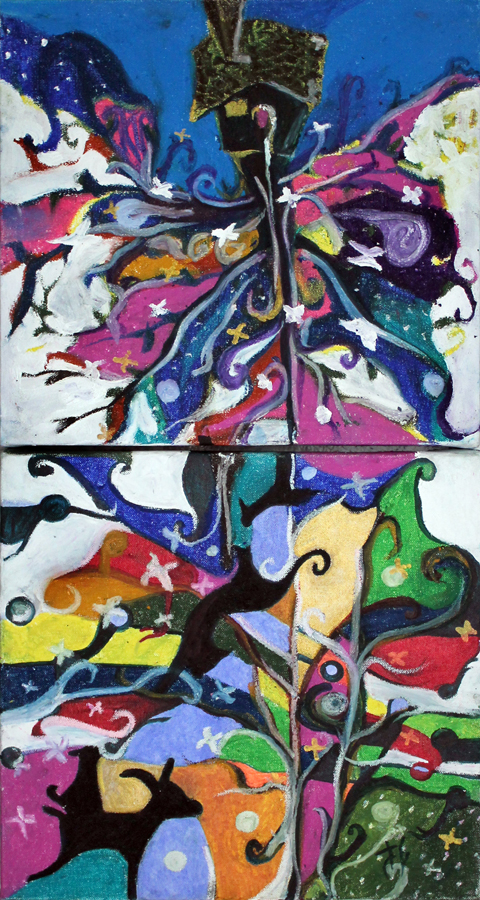

Musicians of Bremen
In this occasion, Jeice does not have a concrete textual foundation, rather the moral of the story, which is that in any predicament, strength can be used to start over if one knows how to utilize the qualities and defects that we each have. This idea inspired the artist to create a painting with many qualities, not centered only on the story of a single character, but rather various characters, which end up sharing the same luck. This way, the painting presents multiple visions of the same situation, and an unexpected union that causes the story to change, provoking that the destiny that seemed predetermined becomes something naturally different and complex. The unusual union of the characters leads to an unexpected happy ending.
Given the element of change that occurs in the story, the artist offers a picture that changes according to the point from where you view it. If you change the angle, not only does the meaning of the portrait change, but also the way you view it.

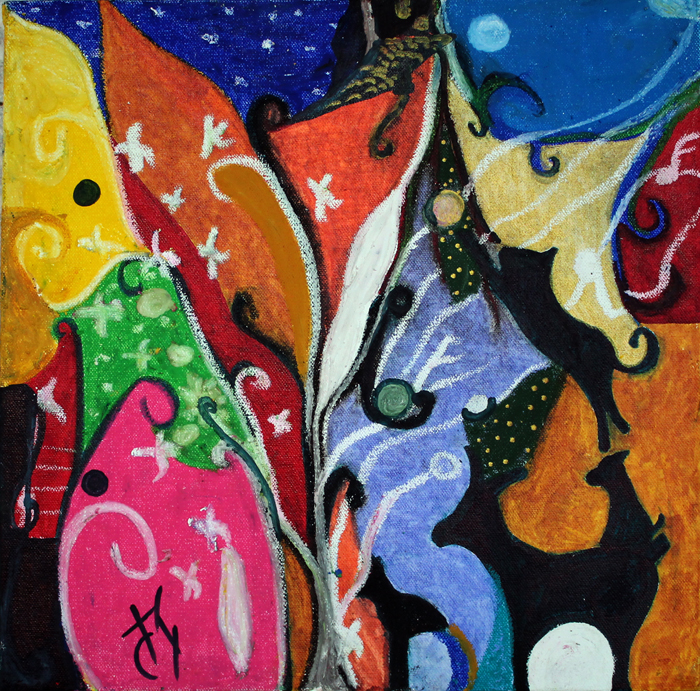

Musicians of Bremen
In this occasion, Jeice does not have a concrete textual foundation, rather the moral of the story, which is that in any predicament, strength can be used to start over if one knows how to utilize the qualities and defects that we each have. This idea inspired the artist to create a painting with many qualities, not centered only on the story of a single character, but rather various characters, which end up sharing the same luck. This way, the painting presents multiple visions of the same situation, and an unexpected union that causes the story to change, provoking that the destiny that seemed predetermined becomes something naturally different and complex. The unusual union of the characters leads to an unexpected happy ending.
Given the element of change that occurs in the story, the artist offers a picture that changes according to the point from where you view it. If you change the angle, not only does the meaning of the portrait change, but also the way you view it.

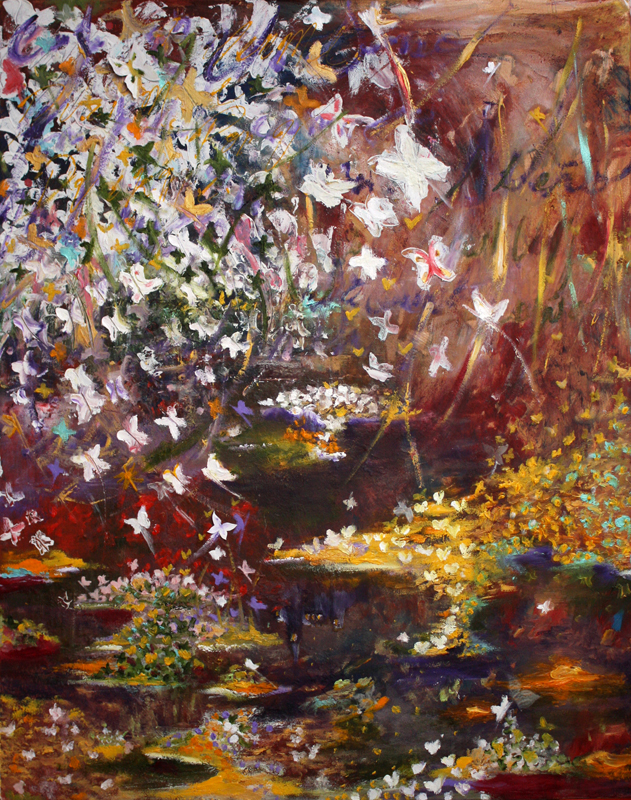

Castle
The Sleeping Beauty (B. Grimm, 1812)
The artist recreates a naturally mythical world with some fall tones that suggest nostalgia for a place, the castle, now far from our reach. The construction is not clearly visible in the painting, but its shape is insinuated in a reflection that we can see in the inferior part of the painting.
There is also a strong reference to time. The artist has used photoluminescent paint, that bring us two moments of reading, one day and one night. The painting has a life even in the absence of light, which leads us to reflect on the continuity of sleep and a cycle that can last perfectly for a hundred years

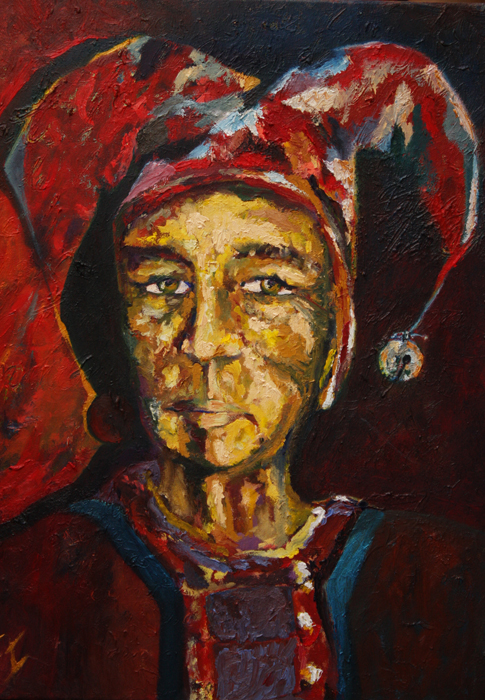

Hunter


Cinderella
While the pumpkin is not present in the version of the Grimm Brothers, the artist depicts it in this work with the aim of bringing the viewer closer to the story.In this way she creates an exterior space that will be (or already was) witness to the transformation of this fruit into a luxurious transportation method.
The colors invite us to think that the story in the painting takes place in a forest, considered an entrance to fantasy worlds. This symbology invites the viewer to wander through the tones and textures, entering a scenery of fantasy built with the only element that references the story that we think we remember, even though it was never present in the version by the Grimm Brothers.

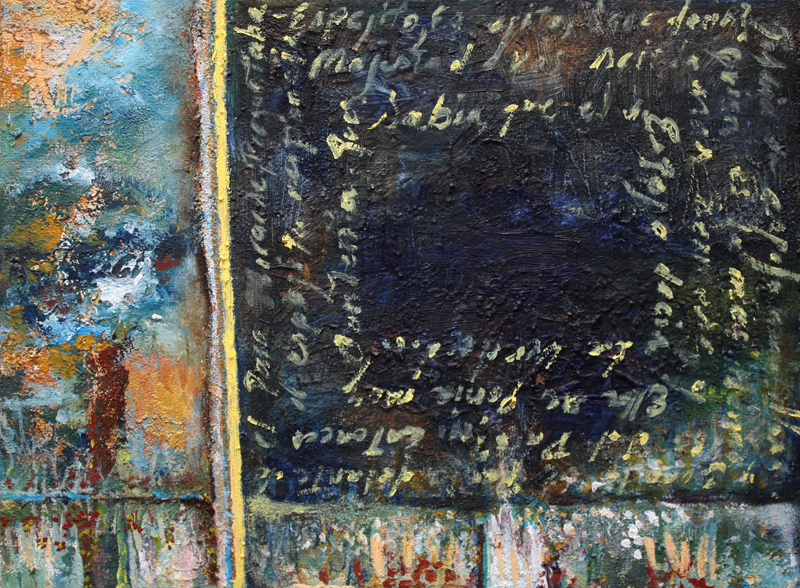

Story
Snow White (B.Grimm, 1812).
The mirror plays a very important role in the story; like forests in other stories, the mirror shows the entrance to another world, reveals the truth about all things, does not lie, and shows what is happening on the other side of the forest. It is because of that, the mirror becomes the door that can take us, if we wish, to the other side of the story.
Small clues in the form of words that reference the story form the outline of the mirror, while touches of gold remembers the color that identifies Snow White when she seems dead, and the gold letters that let the prince identify her as a princess.

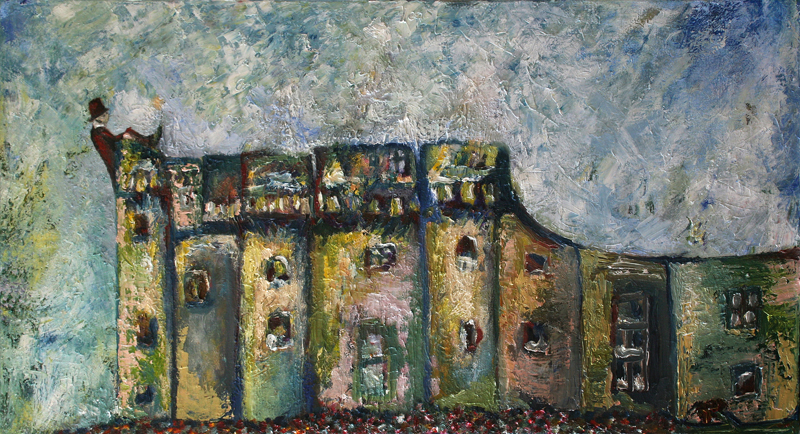

Balance
The Sleeping Beauty (B. Grimm, 1812).
This painting shows a castle immersed in the transformation of time, although it can still be considered clearly. The artist looks at the moment that the prince arrives at the castle, which by fate, is precisely the day that marks the 100th anniversary of the imposed dreams on the princess and her court. This anniversary facilitates the prince’s entrance to the castle and of the spectators of the painting.
The artist invites the viewer to discover the castle alongside the Prince, exploiting the curiosity to know not only what is ahead but also what is further beyond. It is because of that that this painting has the power to be seen from two angles, creating a visual game that allows us to rediscover what we have supposedly already seen.
The presence of the character (who represents the prince), and the viewer's visual journey creates two angles, while at the same time creating a balance in the development of the story, which is shown by the painting.

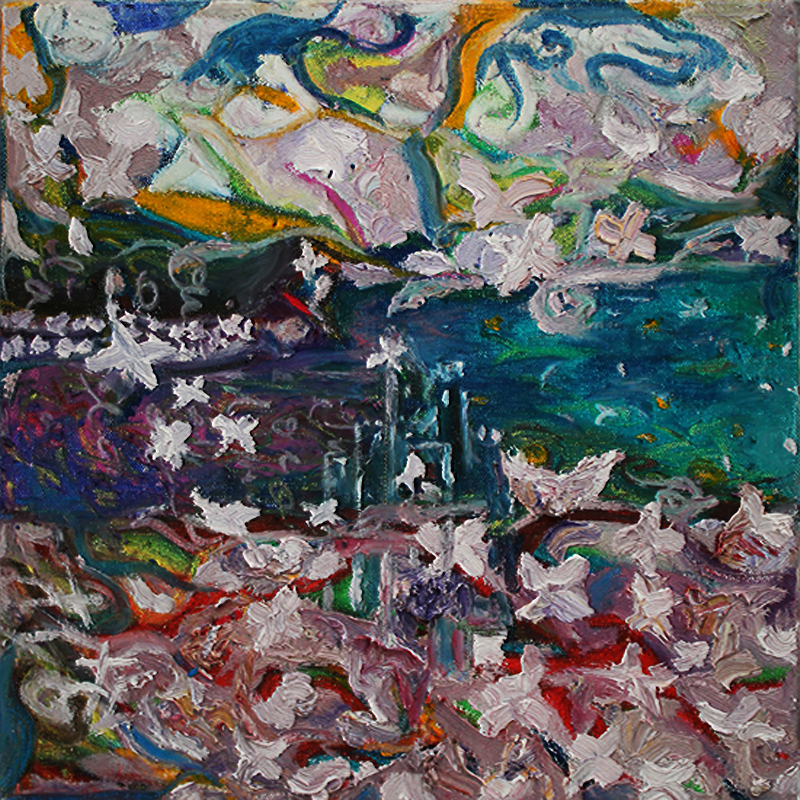

Equilibrio II
The Sleeping Beauty (B. Grimm, 1812).

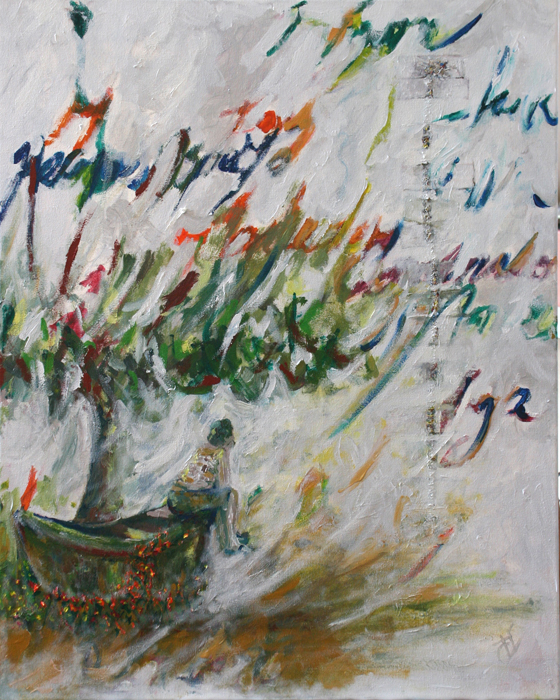

Once upon a time
On the right side of the portrait, there is a kind of wound that the artist paints to represent an escape, a crack which to opens the possibilities of a new story. The image gives way to text and in turn builds the text.
This picture reveals the essence of what will be the series of paintings based on the Brothers Grimm: the paintings are constructed through the written words, the text allows the image to begin to tell its own story, leaving the viewer to identify with the character that is going to begin to read a new image.



Exhalation
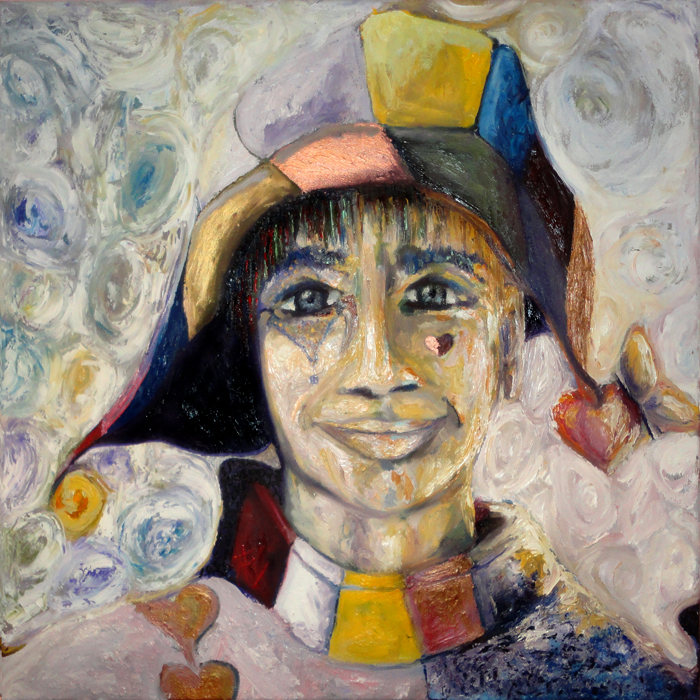

Hansel II
Hansel and Gretel (B. Grimm, 1812).
If you could draw a line in the face of Hansel you could see that the character is torn between two states. In the story Hansel shows two feelings: one when he is strong, with his sister through the forest, and the other when he realizes that their situation is not the best. Anyway he never lost confidence in the affection of his father. And it is the union of these two sides, that make him human. the beginning of the story shows certain characteristics of a hero but at the end he realizes that it is Gretel, his sister, who takes the story to a good ending.

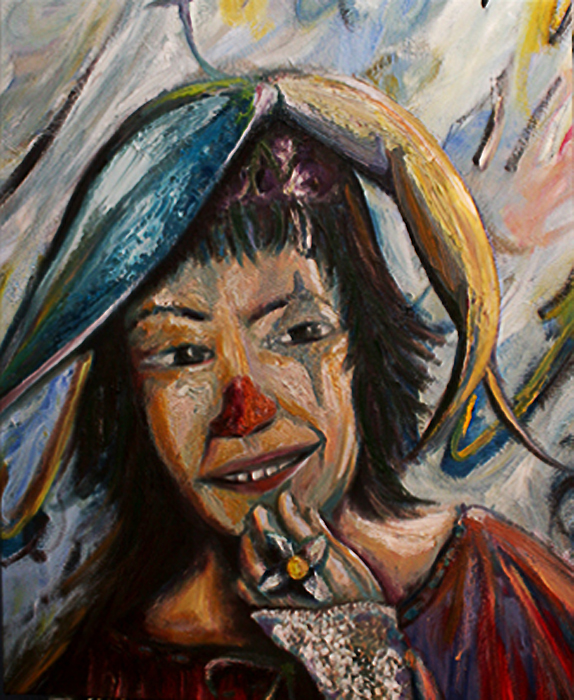

Harmony (Gretel)
Hansel and Gretel (B. Grimm, 1812).


Wolf
The wolf and the seven kids (H. Grimm, 1812).
The painting is not a representation of the wolf in the story, but it takes some features that shaped the wolf and used it to give a new image while keeping elements that help to create connections with the original story. These elements are, for example, the house that can be seen in the background. But, if we look closely, we find elements that show us the real meaning of this work, like the difference in costumes (clear part refers the moment when the wolf uses the costume to trick the kids ), or stain that predominates in darkness of the eye that is reminiscent of clown makeup.

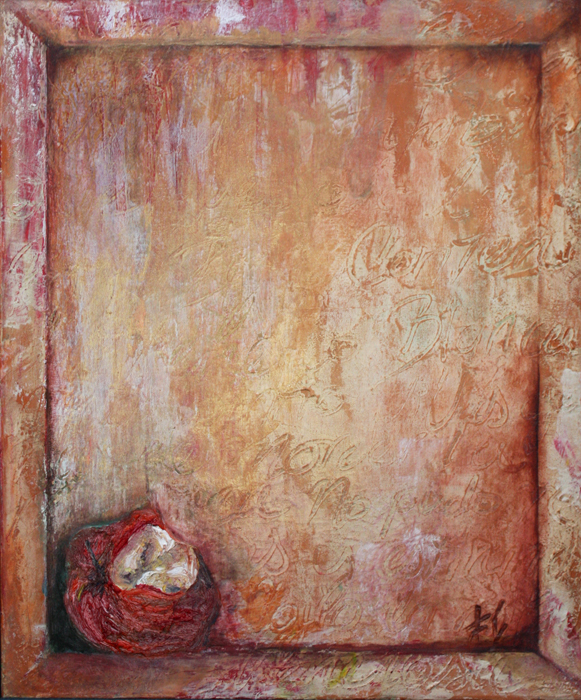

Apple
Snow White (H. Grimm, 1812).
Even though in this image the apple takes a distinguished place, the use of words as pictorial elements and as part of the content of the work by Jeice itself is evident. The artist transforms the canvas into a wall on which are etched fragments of the story, and whose superficial marks are an analogy of the experiences of which Snow White will have to learn to reach her maturity.

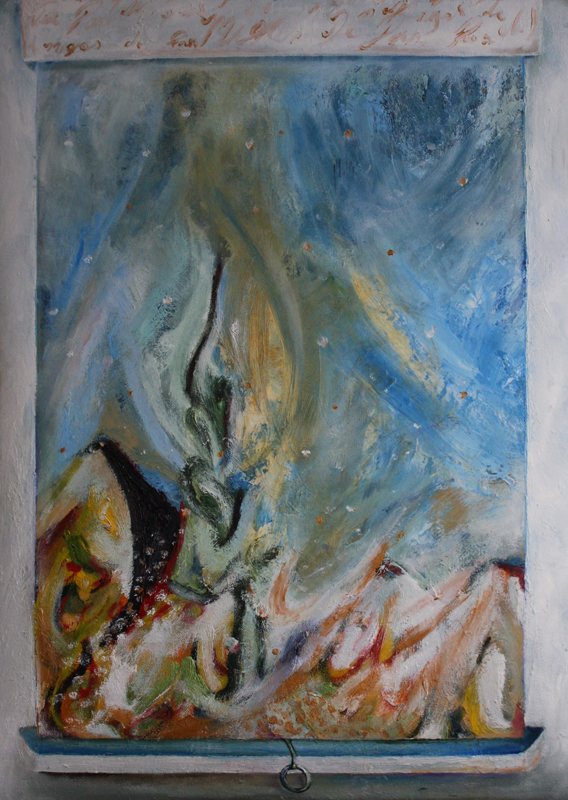

Breadcrumbs
Hansel and Gretel (B.Grimm 1812).
This work shows a closed window that gives the viewer the possibility of seeing the reality behind the window. This work shows one side of the story but if we dare to open it, just like we open a closed window, the reality on the other side will be revealed. In this case, a cruel truth.
In the window you can only see a scene full of chaos with indecipherable balls that represent the breadcrumbs but behind it the other part of the story hides. It is left in the hands of the viewer whether they want to see it or not.



Obituary of a princess forgotten
BeautyRose (Sleeping Beauty) (B. Grimm, 1812)
The painting shows a hidden and forgotten place, the deep, dark waters of what appears to be a pond invite us to a state of immersion, of silence. The outside world suggests by the horizontal strip that we see from the top,is consumed by the presence protagonist in the depth of this body of water that refers to a state of unconsciousness, in an unknown world that is inaccessible our vision. Although Beauty Rose, the protagonist, does not die, her forgetting acts as a force that encapsulates her world and transforms it in a place that is susceptible to being forgotten.
Water is used in this painting for its symbolic value: commonly it represents the way to another world, sometimes magical or spiritual, or the world of the dead. To reinforce this idea, the flower represented in the painting is the marigold flower (or flower petals four), commonly used in the rituals of the celebration of the Day of the Dead in Mexico. Its color represent the light as the sun's rays and arranges the flower on a line shaped path, indicated the way that souls must follow to get home.

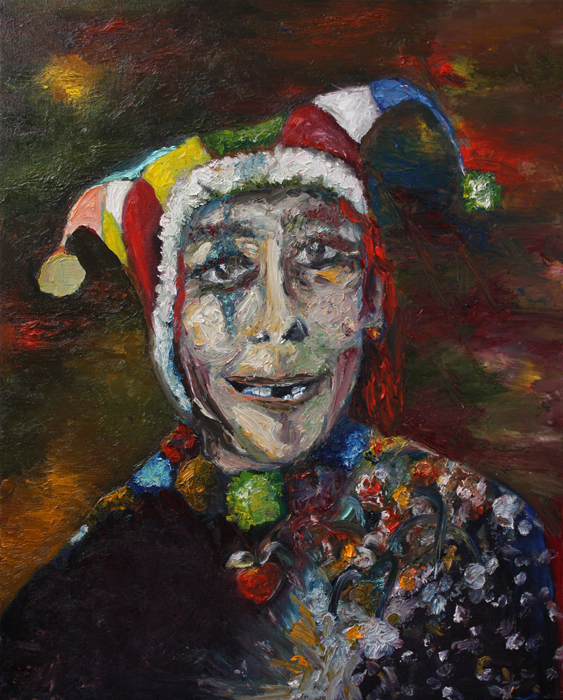

Old woman
Hansel and Gretel (B. Grimm, 1812).
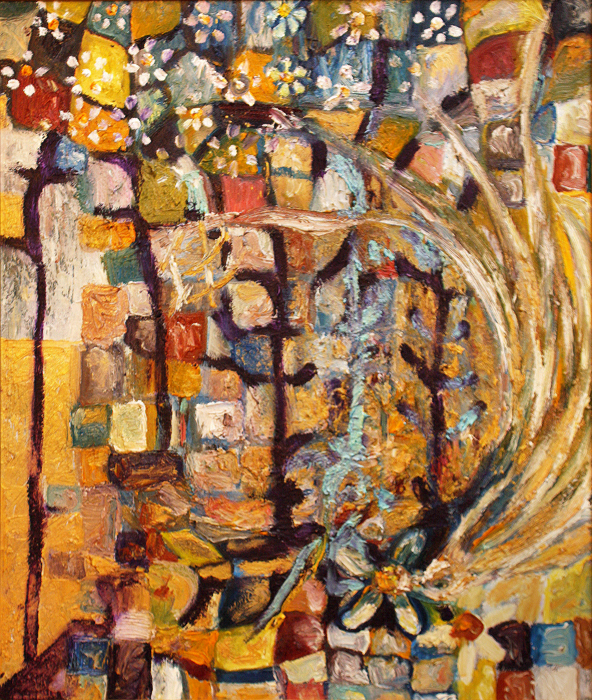

00:00 Golden bird (Spetial bird).
Golden bird (B.Grimm 1812).
The picture shows a bird that is difficult to find. Finding it opens the eyes to a different world in which you could discern a forest of water and verious paths. That way, via the painting, we can see that the heroe must travel to achieve his desired happy ending.
A peculiarity in this picture is that the orientation can be changed; as we see it, is difficult to see the bird in its splendor but if we trace it and we turn the painting we see the figure of the animal clearly. The bird is trying to catch a flower, which is implied by the silhouette of an apple that is lost in the pieces of the story that is, in this case, the elements of the painting.

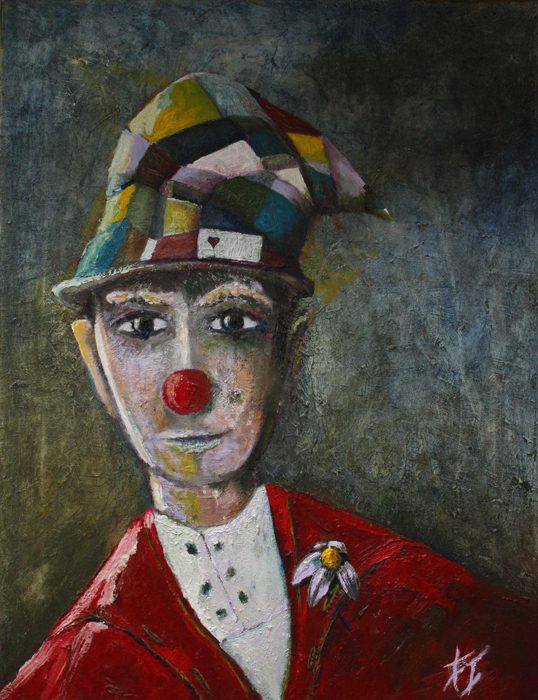

Prince I
Snow White (B. Grimm, 1812).
The heart remembers the image of a letter referring to luck, a crucial element for the prince to meet Snow White.

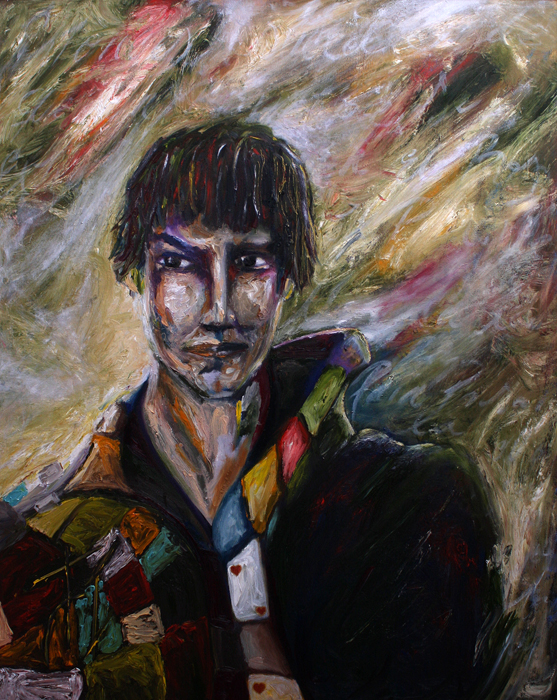

Prince II
Snow White (B. Grimm, 1812).
The heart remembers the image of a letter referring to luck, a crucial element for the prince to meet Snow White.

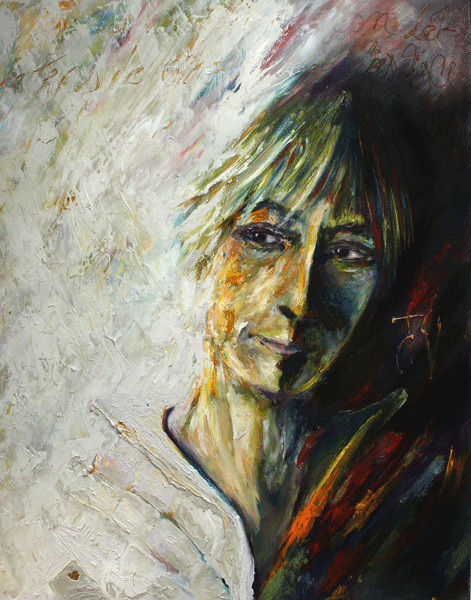

Prince III
Snow White (B. Grimm, 1812).
The artist allows us to see in this moment the revelation of a pure and white light like the snow, reveling the textures and words that are not completely legible at first glance. Here again we find ourselves with a strong presence of the use of words as a pictorial element and as a part of the content of the image itself.
The Prince costume detail, a heart shape on the bottom left of the picture, makes reference to another existing version of the same prince tale that is part of the same exhibition, the heart remembers the image of a letter referring randomly, crucial to the prince to find Snow White.
An interesting detail of this painting is the prince’s coat, a heart shaped in the left bottom corder of the painting. The symbiology that encloses this element is double: on one side, the better known is the heart that evoques the feelings that the prince will eventually have for Snow White. On the other side, the heart reminds us of the image of a card which refers to luck a crucial element for the prince to meet the young woman.
The Prince's face splits into two, one part that seems mischievous seems to care more about the golden letters and other part showing the innocence in his face as he read the letters. On the illuminated part we remove the uncertainty of the intentions of the prince. This painting shows the duality that can be given in the moment when the prince read theh inscription.
These moments seem to go unnoticed in history but the authors refer to them because subconsciouslythose small decisions and details are what determine the end of the story.



Red
Little Red Riding Hood (B. Grimm, 1812).
The color red symbolizes fire, danger, anger, warning, etc, is a strong color that conjures up a range of seemingly conflicting emotions as love, violence or war.
This color symbolizes the two sides of the coin, for example, cupid and hell are both identified with this color.
The artist show us a character who's actually a combination between Red Riding Hood and the wolf, making us see that at some point she may be the same person, the malice and cunning, helps Little Red Riding Hood overcome obstacles and lead her to a good end.

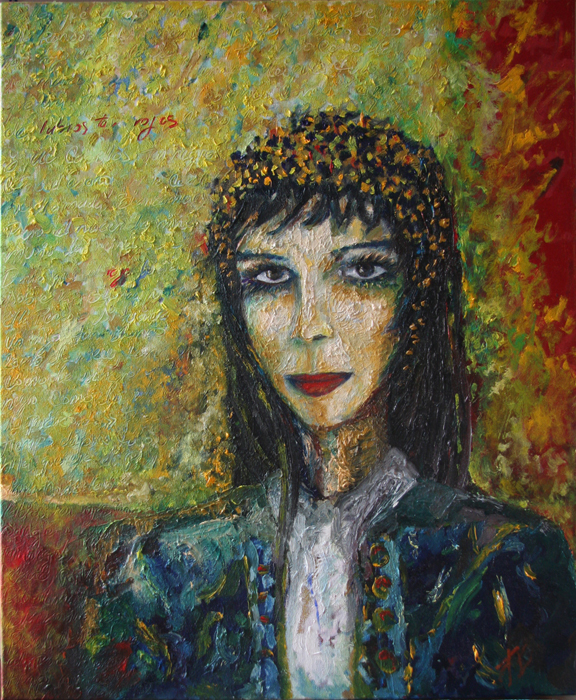

Red lips
The phrase that is Jeice’s foundation for this painting is composed of only two short words “ red lips”. Although short, it is extremely symbolic. The red lips are a characteristic that not only physically describe the character, but also contain an erotic meaning, especially when we are speaking of a teenager, which is what ends up becoming Snow White when she passes the tests and is ready for the next step, marrying the prince.
Considering the symbolism of the colors, we could say that the sentence of the story "If I had a child as white as snow, as red as blood, as black as ebony" which was said by the mother of Snow White prior to the birth of her daughter. What it actually says is that the mother wanted a child pure as snow, as strong as fire and equally mysterious and mischievous as the color black. Jeice worked on this painting from another side, fearful and erotic, by showing us the red lips. By using the significance of the elements described, such as colors and body parts, the artist shows us a character we are not used to, a character that looks at us from the other side of the mirror.

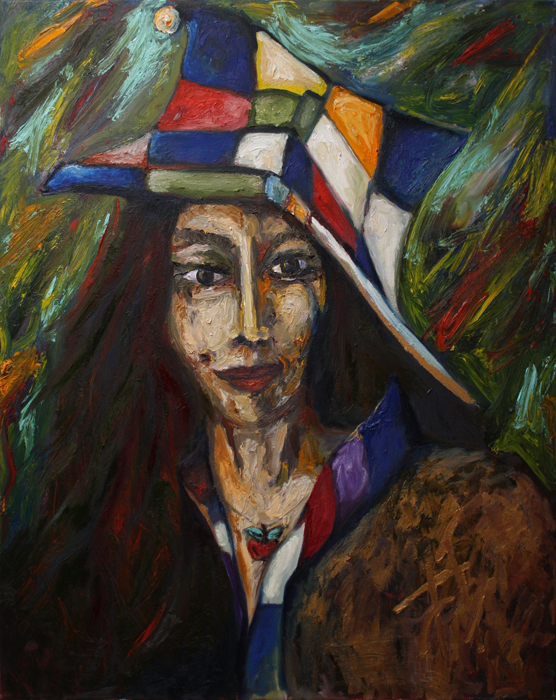

Queen
Snow White (B.Grimm. 1812).
Although we would expect more roughness in her face, the shadows painted in the image resemble tears, a clear symbol of sadness. Although the Queen seems like a cruel and strong character, she contains a deep internal anxiety about not being the most beautiful woman and a loneliness that is only relieved by the presence of a mirror in which she sees her own reflection.
As expected, she wears magnificent robes, but there is something remarkable about the queen: instead of a crown, she wears on her head a hat similar to those used by harlequins. This information sheds light on the end that awaits this character. As punishment for her actions against Snow White, the witch is forced to wear iron shoes that were placed on hot coals while dancing like the harlequins until she reaches her death.



No title


Three drops
Snow White (B.Grimm 1812).
In ancient cultures and medieval rituals, blood and numerology plays a very important role that is reflected in the story through Snow Whites mother’s ritual in the beginning of the story. In the ritual, the mother gives three drops of her blood, that fall on the snow , in order to make her wish.
This painting focuses on the moment when the ritual begins, the three drops of blood open the door to a birth, symbolized by the butterfly, complete the portrait and in turn symbolize the beginning of the story.



I wish
Cinderella (B. Grimm, 1812).
The presence of the tree, slightly insinuated by some green space is only a spatial reference. What prevails in this is image is the dance of forms, colors and textures that suggest l the true in dialogue with the ethereal.

COPYRIGHT 2018 | JEICE HERNANDEZ All images on this website are protected by copyright, if you wish to use an image, please contact the artist.











